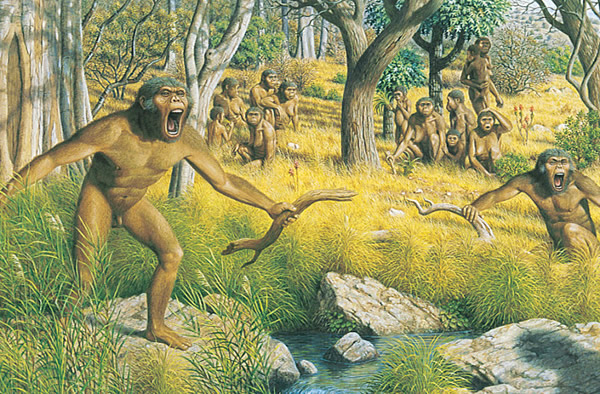Human Ancestor's Skeleton Dated to 3 Million Years
For more than a decade, anthropologists have debated the age of the Australopithecus fossil called “Little Foot,” as they excavated the nearly complete skeleton of the extinct potential ancestor of humans. Now scientists say they have conclusively shown the specimen is about 3 million years old.
A recent analysis of stone surrounding the fossils found evidence of the bones’ age and suggested Little Foot may be the oldest nearly complete Australopithecus skeleton ever found.
Soon after the initial find, a magnetic study suggested the bones were 3.3 million years old. However, a 2006 study published in Science started an anthropological controversy when it suggested Little Foot’s bones were 2.2 million years old, based on the age of calcium-rich rocks surrounding the fossils. Two other later studies dated the skeleton to 2.35 and 2.58 million years ago, using a technique known as uranium-lead decay dating.
Recently, Little foot’s discoverer, anthropologist Ronald Clarke of the University of Witwatersrand in South Africa, and colleagues weighed in. They suggested geology may have confounded the estimates of Little Foot’s age, in a paper published in the Journal of Human Evolution.
Clarke and his team observed the layering of the rock around Little Foot and the chemical composition of those rocks. They presented evidence that a partial collapse of the fossil-bearing stones into a lower cavity of the cave led to a confusing geological juxtaposition.
After the collapse, a calcium carbonate rock, known as flowstone, formed in the spaces around the fossils. This led to a mix-up millions of years later when scientists dated the younger rock and believed it had formed at nearly the same time as the fossils.
In 1994, Clarke identified the the small foot bones of a hominid, or human-like ape species, in a museum collection. He then hen went looking for the rest of the skeleton in the Sterkfontein Grotto cave in South Africa. In 1997, Clarke and his team found the upper leg bone of Little Foot.
After nearly 15 years of work in Sterkfontein Cave, anthropologists finished removing the remaining fossils of Little Foot from the cave where it was found, including the skull, arm, hand and leg bones, the pelvis, and many vertebrae and ribs, in 2011, reported Science.
Now, the skull, arms, pelvis and some other bone have been removed from the encasing rock.
Illustration: Australopithecus was a human-like ape species that lived about 3 million years ago, according to new research. Credit: Matheusvieeira, Wikimedia Commons(Mar 14, 2014 04:48 PM ET // by Tim Wall)












